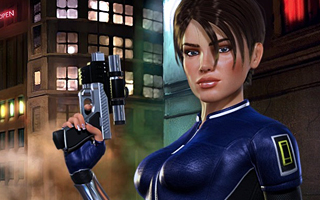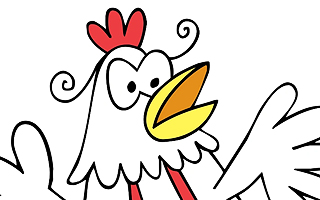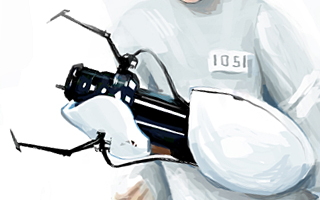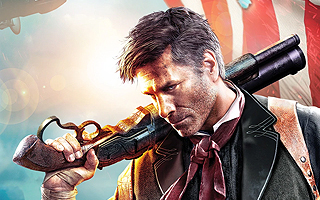Advertisement Games
Top 10 Most Bizarre Advertisement Games of All Time!
When it comes to licensed video games, there’s a big difference between games based on established intellectual properties from other entertainment mediums (movies, comic books, anime, etc.) and games based on consumer products. Both can be considered forms of cross-promotion, but I think we can all agree that a game based on Dragon Ball Z and a game based on Cheetos have different goals in mind. To put it plainly, the games on this list are glorified advertisements. This site typically acknowledges greatness, but it made more sense to focus on the absurd in this instance since the concept itself is so bizarre. With that said, here are ten of the strangest marketing tie-ins in gaming history.
10
Chester Cheetah: Too Cool to Fool
1992

Chester Cheetah has been the face of the Cheetos brand since 1986. The self-described hip kitty was know for his smooth voice and an unhealthy obsession with cheese flavored snacks, and his commercials often involved over-the-top cartoon violence. (It’s not easy being cheesy, after all.) Cool mascot characters were a hot commodity in the gaming world in the ’90s, so it kind of made sense for Chester Cheetah to be given his own game. He was well-suited for an industry that gave rise to Bubsy the Bobcat, Rocky Rodent, and Awesome Possum. On that note, Chester Cheetah: Too Cool to Fool was released on the SNES in 1992 and landed on the Genesis shortly thereafter. A Chester Cheetah animated series was also under development in 1992, but the project was shelved after busybody activists raised concerns about commercials masquerading as entertainment. The game was released without controversy, however. I guess nobody could confuse Chester Cheetah: Too Cool to Fool with entertainment.
9
McDonald’s Happy Disc
2001

Few companies spend more money on advertising than McDonald’s, and their ability to reach younger customers has been instrumental to the success of their brand. There have been a number of McDonald’s video games released over the years, but none is more obscure than the Happy Disc from 2001. The disc was given away with McDonald’s Happy Meals in Japan and featured demos of PaRappa the Rapper 2 and a little known Ape Escape spinoff called Pipo Saru 2001 that was never released stateside. Neither of these games had anything to do with the fast food giant originally, so their textures were modified an McDonald’s logos were plastered all over the place. It might seem like I’m bending the rules by including a demo, but demos are really just a glorified form of advertising. The McDonald’s Happy Disc pulled double duty as an advertisement for video games and an advertisement for a fast food chain.
8
King Games
2006

In 2006, Burger King released three games for the Xbox that were sold for $3.99 with the purchase of a value meal. Pocketbike Racer was a simple racing game which featured customizable bikes and drivers, Big Bumpin’ was based on bumper cars and supported up to eight players via Xbox Live, and Sneak King was arguably the most unusual stealth game of its era. The games featured familiar faces from Burger King advertisements – including the Subservient Chicken, TV’s Brooke Burke, and the creepy King himself. The titles were developed by Blitz Games and were originally slated for release on Xbox Live Arcade, but Burger King wisely opted for a physical release instead. Although none of the King Games were especially well-received by critics, they sold millions of copies and collectively ranked within the top 10 best-selling games of 2006. The games were only sold during a five-week promotional period, but Burger King saw a 40% sales increase for the quarter due to their popularity.
7
Yo! Noid
1990

The Noid was a mischievous advertising mascot for Domino’s Pizza in the 1980s. There’s nothing especially unusual about games based on colorful mascots, but Yo! Noid stands out for a number of reasons. The game originally had nothing to do with the Noid or pizza, and Capcom merely modified an obscure Japan-only Famicom platformer called Kamen no Ninja Hanamaru after Domino’s commissioned them to make a game. The strangest thing about Yo! Noid is the concept itself. The Noid was famous for ruining pizza, and the Domino’s ads would implore their customers to “avoid the Noid” and order from them. Unlike the Hamburglar – who stole McDonalds hamburgers because he wanted to eat them – the Noid ruined pizzas because he was an asshole. He would stomp on pizzas, attack delivery men, and throw bombs into pizza boxes. After spending several years conditioning customers to hate the Noid, it seems strange to release a game where he was painted in a heroic light. It would be easy to write Yo! Noid off as a quick cash-in, but a lot of people have fond memories of the game and it even inspired a fan-made sequel in 2017 that was surprisingly good.
6
Pepsiman
1999

Pepsiman was a superhero mascot created specifically for Pepsi’s Japan branch. After Pepsiman was included as a bonus character in the Japanese version of Fighting Vipers, Pepsi decided that their beloved mascot should be given a brighter spotlight. With that in mind, Pepsiman was released on the PlayStation in 1999. The game could be likened to the auto-run stages in Crash Bandicoot, and the gameplay was intentionally simplistic. The goal in each stage was for Pepsiman to save someone who was in desperate need of a drink, but the most interesting thing about the game was the low-budget videos that played after each stage. These cutscenes featured a redneck sitting alone in his living room while guzzling cans of Pepsi and stuffing his face with Lays potato chips. These scenes didn’t exactly paint Pepsi in the most glamorous light, but I can appreciate the wacky sense of humor. Despite being released exclusively in Japan, the cutscenes were set in America and were presented entirely in English. The game is surprisingly charming, but I still can’t believe that Pepsi signed off on it.
5
Chase the Chuck Wagon
1983

To promote their Chuck Wagon line of dog food, Purina commissioned Spectravision to produce a game for the Atari 2600. The end result was a simple maze game called Chase the Chuck Wagon which was cobbled together within a matter of days. The point of the game was for players to guide a dog through a maze and eventually make their way to the titular chuck wagon. (The premise was loosely based on a popular ad campaign which saw dogs chasing tiny chuck wagons.) The game was released in 1983 and arrived just in time for the great video game crash. One of the reasons why the market crashed in the first place was because companies who knew nothing about video games were rushing products to market in an attempt to capitalize off a booming industry. That being said, Chase the Chuck Wagon didn’t confuse consumers or take up precious retail space. It was only available via mail order, and it required customers to redeem proofs of purchase from bags of dog food in exchange for the game. If you’re buying a game with dog food receipts, you probably know what you’re in for.
4
Cool Spot
1993

In the 1990s, someone decided that the red circle from the 7up logo would make a perfect mascot. With that in mind, the circle came to life, sprouted arms and legs, and started wearing sunglasses for some reason. The aptly-named Cool Spot was featured in a number of television commercials before landing his own video game in 1993. Cool Spot was a surprisingly solid platformer from Virgin Games that was met with great reviews. (If you enjoyed Earthworm Jim or the Genesis version of Aladdin, then Cool Spot might be right up your alley.) The game was released on seven different platforms, and it apparently sold well enough to warrant a sequel in 1995. The weirdest thing about the game was how the 7up references were removed in the European versions of the game. In North America, the stages featured 7up bottles as set pieces. In Europe, they were replaced with generic bottles. The collectible 7up logos which could be found in the NA version were also replaced in Europe. Fido Dido had been the face of the 7up brand in European markets since the 1980s, so the 7up logos were removed from Cool Spot because they didn’t want people to associate the 7up spot with the 7up brand. Why bother releasing a game based on an advertising mascot if you’re going to remove references to the product the mascot is supposed to be advertising!?
3
Chex Quest
1996

Chex Quest is a non-violent first-person shooter that was aimed specifically at children. The game was based on the DOOM engine, but the Chex Warrior wasn’t nearly as violent as the DOOM space marine was. Instead of chainsaws and shotguns, the Chex Warrior relied on cereal-themed power-ups, weapons, and ammunition. Chex Quest was an effective parody that was filled with in-jokes, and its ironic sense of humor is one of the reasons why it developed such a strong following. The general consensus is that the game was way better than it had any right to be. Over five million copies of the game were distributed with Chex cereal, and it’s noteworthy for being the first video game to be included as a cereal box prize. Although it was essentially given away for free, Chex Quest is one of the most successful games on this list. The game was honored with numerous advertising awards, and it helped reinvigorate the Chex brand.
2
Captain Novolin
1992

The other products that have been discussed on this page look like diabetes waiting to happen, so Captain Novolin is right at home on this list. Novolin is brand of insulin that’s manufactured by Novo Nordisk, and Captain Novolin was conceived as a way to educate children about diabetes. The side-scrolling action game (released on the SNES in 1992) stars a superhero with the power of… diabetes? As Captain Novolin fends off attacks from aliens disguised as junk food, he has to carefully manage his illness. Captain Novolin can die if he doesn’t keep an eye on his blood sugar, so he has to eat healthy meals along the way. The game was purportedly created for adults looking to facilitate discussions about diabetes with their children. Regardless of its perceived educational value, Captain Novolin is still a glorified advertisement for a specific brand name. I am not a doctor, but I don’t think forcing kids to play bad games is an especially nice way of teaching them about their illness. Just think of the poor saps that got Captain Novolin for Christmas instead of Super Mario Kart.
1
Darkened Skye
2002

Darkened Skye is set in the fantasy realm of Lynlora and follows the exploits of a sarcastic young woman named Skye. After stumbling upon a colorful artifact marked with the letter S, Skye is suddenly blessed with magic abilities. If you haven’t guessed already, the artifact in question was a Skittle. Skittles are said to be the source of all magic in Lynlora, so Skye is tasked with gathering them up in order to erase the darkness from the land. Incidentally, some jackass stole the rainbow from the sky in a bid to hoard all of the Skittles for himself. Darkened Skye has no regard for the fourth wall, and it explicitly references the game’s marketing department. That said, the Skittles references aren’t as brazen as they could be. The game is loosely based on Skittles’ “Taste the Rainbow” ad campaign, but no references to the candy are made in the game’s title or on the cover of the game. You’d figure the Skittles logo would be plastered all over the place, but you’d have to read the fine print on the back of the box to know that the game had anything to do with the popular confectionery. It’s remarkable how the Skittles references manage to be in-your-face and under the radar at the same time.





Do you agree with this list? Let us know what you think by leaving a comment below. Your opinion matters!